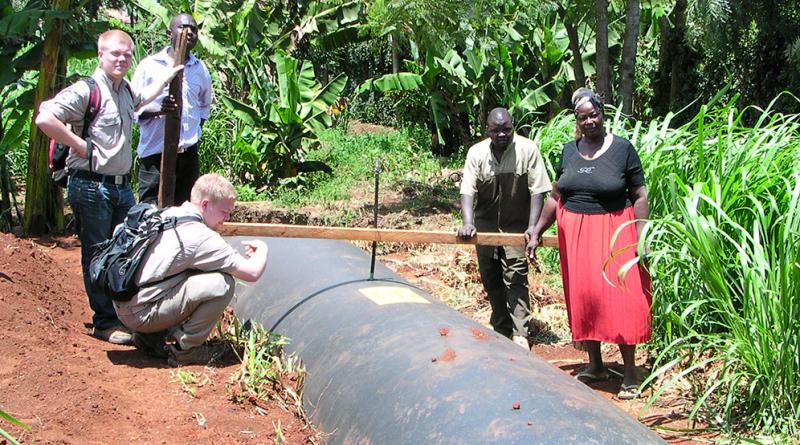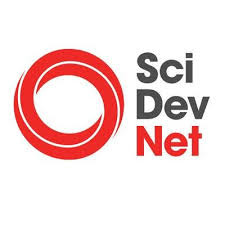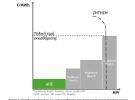Powering up the ‘last mile’ in renewable energy rollout in Africa.

It takes Habiba Ali at least a three-hour drive to get to her customers – what energy experts would call ‘the last mile’. When she sets off from her base in Kaduna, northwest Nigeria, it’s usually without knowing where to find the places and people most in need of solar power.
But despite the constant back-and-forth, Ali is clear that this is where her business, Sosai Renewable Energies, needs to be.
She says most renewable energy efforts push technology development, but forget that crucial last step: how to reach people who need it. “We’re more interested in what the customer wanted, and how that satisfied the need that they wanted to meet,” she adds.
“There’s a lot of technology. But ensuring people are able to buy it is what we try to address.”
Habiba Ali
Ali’s work hasn’t gone unnoticed. Next month she’ll be joining other women leaders in Washington DC to receive an award from the Vital Voices Global Partnership, founded by former US Secretary of State Hillary Clinton.
Her business is also backed by the Nigeria Off-grid Market Acceleration Program (NoMAP), supported by the Shell Foundation and USAID. This will help expand Sosai into the rural off-grid market by getting around logistical hurdles such as collecting fees. “They’re also helping us to find communities easily”, says Ali, “so that when you set out of your office…you go with a plan”.
Reaching that ‘last mile’ is notoriously difficult, and one reason why roll-out of renewable energy in developing countries has been slow.
Globally, the energy transition is an uphill struggle: fossil fuel systems are entrenched, with governments slow to put in place incentives and tariffs that make renewables viable.
A report released last year by the UN’s Sustainable Energy for All initiative painted a bleak picture of dwindling financial flows towards clean electricity, with growing investment in coal plants.
While delivering this “sobering reality check” the UN called on the global community to learn from “the few bright spots where gains have been made”, saying that proven technologies and business models do exist.
The right driver
India was highlighted as one of those ‘bright spots’. Its annual private investment in renewable electricity grew to US$10 billion in 2015-16, a six-fold increase within two years. According to the government, every village now has electricity, and World Bank data put access in 2016 at 85 per cent of the population.
Harish Hande, seen as a pioneer in providing renewable energy in rural India through the Bangalore-based social enterprise SELCO (Solar Electric Light Company), says such statistics miss the point.
“We say we have reached the goal of providing X number of villages with sustainable energy. [But] are they out of poverty?” asks Hande.
Some 130 million people across the country still lack electricity. For Hande, the key is to focus on helping poorer people make a living when rolling out renewable energy systems.
SELCO focuses on making solar technology affordable, and Hande takes an unconventional line on staffing: doing away with resumes, he hired local technicians committed to finding solutions for people in rural areas.
“That's the concept, that we will be a human-centric organization,” he says, adding: “You need to gain the trust of the poor client, that whatever he is going to [have] installed will actually work.”
In Nigeria, Ali adopted a similar philosophy. She says the first step is to understand the problems rural people face day to day.
Sosai began with solar lanterns. Along Nigeria’s busy thoroughfares, women set up stalls on the roadside, selling hot food or nibbles like fried bean cakes to truck drivers stopping for a break on overnight journeys. Night after night, they inhale the toxic fumes of kerosene lamps.
Ali’s business offered a clean alternative. First, single-point solar lanterns, then systems connected through a battery pack and a long wire, carrying two lamps or more.
“We had a big basket of products that people could actually choose from based on efficiency, based on number of lights, based on aesthetics,” says Ali.
Having choice is important. For many people in rural areas buying a solar system means spending at least a month’s earnings.
So is affordability. The UN singled out financing as “a persistent challenge” and the main obstacle to the renewable energy transition.
A finance mix
Ali, who trained in business, says finding the right financial structure was key to making Sosai work. “There’s a lot of technology,” she says. “But ensuring people are able to buy it is what we try to address.”
The cost of buying kerosene or batteries adds up over time, ending up more expensive than a solar system that lasts for six or seven years. But buying solar means paying a lump sum up front. Sosai lowers the barrier by offering payment by instalments or pay-as-you-go financing.
In its latest Poor People’s Energy Outlook report, which looked at six programmes attempting to scale up renewable energy without excluding poor people, the NGO Practical Action found that every case had to begin – and sometimes continue – with subsidy. “The market alone will not reach areas and communities considered unprofitable,” it says.
It often takes a mix of financing sources to get programmes to work. In Indonesia, a push for biogas cookstoves, which the UN report calls a success story, began under a bilateral agreement with Dutch NGOs Hivos and SNV. The Dutch government put up much of the capital, according to Lina Moeis, director of Indonesia’s Domestic Biogas Programme or BIRU, which now manages the programme.
With the system costing at least US$400, it relies on government subsidies and carbon trading for its success, but Moies admits: “We are very frustrated – it’s very small”, citing a feasibility study that puts capacity at one million users.
In Nigeria, Ali has also tapped into carbon trading, making it part of Sosai’s financing mix through a Clean Development Mechanism (CDM) project. But funding from global programmes still seems out of reach.
“Over three quarters of the entrepreneurs I know in energy have not accessed the Green Climate Fund,” says Ali. “I don’t really know how it works.”
More than money
Finance may be vital for success, but it’s not enough to keep these enterprises going.
Ali had to enlist people in the villages she serves to scale up the business. A community leader advises on who can be trusted with how much debt. And women in the community sell solar products on Sosai’s behalf for a 10 per cent commission.
In Indonesia, Moies describes a web of mechanisms that support the biogas programme. “The carbon funds help us keep the partnership with more than 40 NGOs, cooperatives and SMEs [small and medium enterprises]. And we train masons who are attached to those NGOs or cooperatives [to build the biogas tank],” she says.
Industry has a role too. Nestle provides dairy farmers with financing, which they pay back with milk produced on their farms. “It’s been very successful” for farmers who own more than five cows and produce enough, says Moeis.
Moeis says government policy is also crucial. In Indonesia, years of subsidising LPG resulted in kerosene use falling from 36.6 per cent of all fuel to 3.8 per cent between 2007 and 2016, while LPG use shot up seven-fold to 72.4 per cent. The UN calls Indonesia a “bright spot” on the back of this successful fuel conversion.
Moeis argues it’s time for another conversion. Dairy farmers adopt biogas easily, she says. They like it because the digester uses up cow dung to produce organic fertiliser as well as energy.
The benefits clearly go beyond global climate targets, according to Hande, and renewable energy policies are missing the focus on development. “We need to look at sustainabilityholistically,” he says. “We have to look at the energy-health nexus, [the] energy-livelihood nexus. And that's when you merge the climate goals with the SDGs.”
This article was supported by The Rockefeller Foundation Bellagio Center. For nearly 60 years the Bellagio Center has supported individuals working to improve the lives of poor and vulnerable people globally through its conference and residency programs, and has served as a catalyst for transformative ideas, initiatives, and collaborations.
28 March 2019




